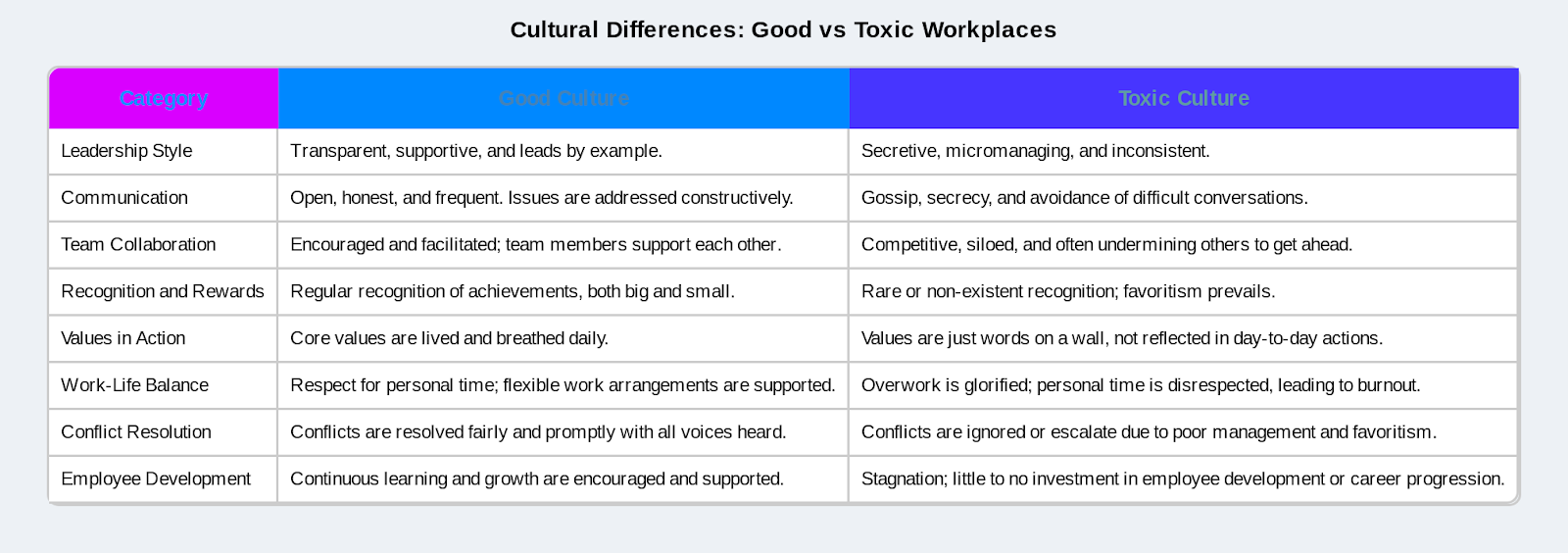Picture this: you're in an interview, and the candidate asks, "Can you tell me about your company culture?" It's a loaded question, right? What they're really asking isn't about the free snacks or occasional team happy hours. They're digging deeper, trying to figure out if your company is where they can thrive. So, what exactly are they hoping to discover?
The True Meaning Behind the Question
When candidates ask about your company culture, they’re not just curious about perks. They’re trying to unearth the core of your organization. They want to understand what it truly feels like to be part of your team—beyond the glossy job descriptions. They’re asking if your culture is more than just words on a website or motivational posters in the break room. Does your team embody the values you preach? Is leadership consistent and authentic? Essentially, they’re trying to figure out if your culture aligns with their personal values and work style.
The Red Flags Candidates Want to Avoid
Candidates are on the lookout for warning signs. They want to avoid workplaces where culture is just a buzzword, where the values plastered on the walls don’t match the everyday actions. They're wary of environments that offer superficial perks to mask deeper issues like toxic leadership, lack of transparency, or a resistance to change. These are the types of cultures that lead to burnout, disengagement, and ultimately, high turnover. What candidates truly want is a workplace where the culture is authentic, consistent, and supportive—a place where they can grow both personally and professionally.
Culture: It’s Not What You Do; It’s Who You Are
Here’s the heart of it: culture isn’t about the things you do, it’s about who you are. Thanks to Jamie Naughton Henriod for making that statement as a member of our board long ago. It has stuck with me ever since. Culture is the sum of your team's behaviors, attitudes, and values. It’s how your team interacts daily, how leadership supports its people, and how your company faces challenges and celebrates successes. In essence, it’s the unwritten code that governs how your team operates, even when no one’s watching.
Good Culture vs. Toxic Culture: A Quick Comparison
Let’s break it down. In a healthy, positive culture, employees feel valued, communication is open, and there’s a strong sense of community and purpose. Leadership is approachable and leads by example. On the flip side, a toxic culture is marked by poor communication, lack of trust, and a disconnect between stated values and actual behaviors. It’s an environment where employees feel undervalued and leadership is distant or inconsistent.

The Power of Consistency
Consistency is key when it comes to culture. If your company’s culture shifts with every new hire or leadership change, it creates confusion and erodes trust. Employees need to know what to expect—they need a stable environment where they understand the values they’re expected to embody. A consistent culture builds trust, engagement, and loyalty.
How to Ensure Cultural Consistency
So, how can you ensure that your company culture is not only well-defined but also consistent? Here are a few actionable strategies:
Clearly Define Your Core Values:
Your values should be more than words—they should be lived every day. Gather input from across your organization to ensure they resonate with everyone.
Lead by Example:
Culture starts at the top. If you value transparency, be open in your communication. If innovation is important, take risks and show that it’s okay to fail.
Embed Culture in Every Process:
From hiring to performance reviews, ensure that your culture is a thread woven through every process. Hire people who align with your values, and recognize behaviors that exemplify your culture.
Communicate Regularly:
Don’t assume everyone understands your culture—talk about it often. Share stories that highlight your values in action, and use regular communication channels to reinforce your cultural expectations.
Measure and Adjust:
Regularly check in with your team to see how the culture is perceived. Use surveys, feedback sessions, and other tools to gauge the health of your culture. If there are gaps, address them head-on.
Creating and maintaining a strong company culture is an ongoing commitment. It’s about fostering an environment where employees understand who you are as a company, what you stand for, and where they feel they truly belong. As a COO, you have the power to shape this culture, ensuring it remains consistent, authentic, and reflective of your company’s core values.
Let’s work together to create a culture that’s not just good on paper but great in practice. Contact us today to start building a culture that sets your company apart.

